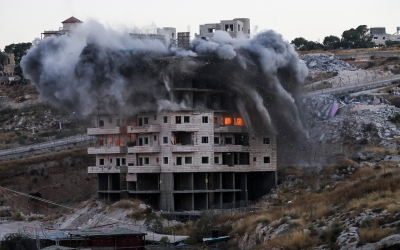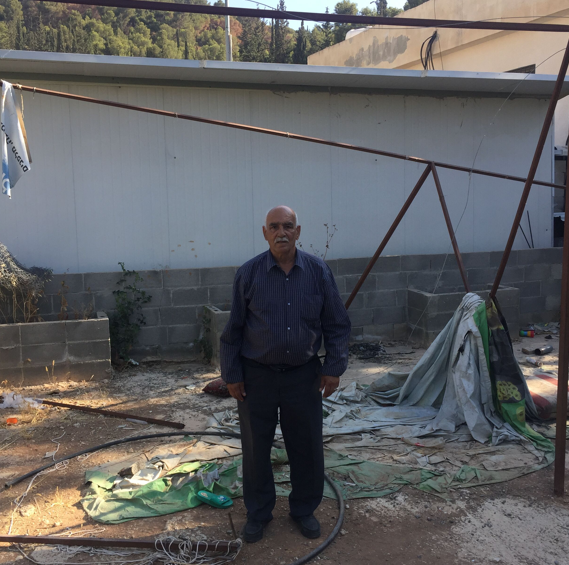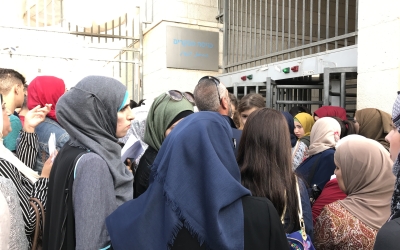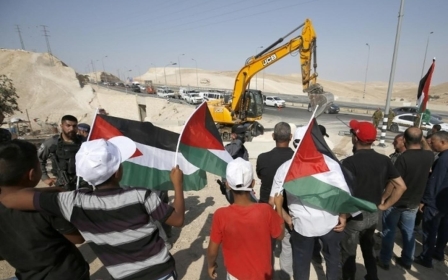'Engineering a Jewish majority': Palestinian villagers driven out by Israel's 'green' policies
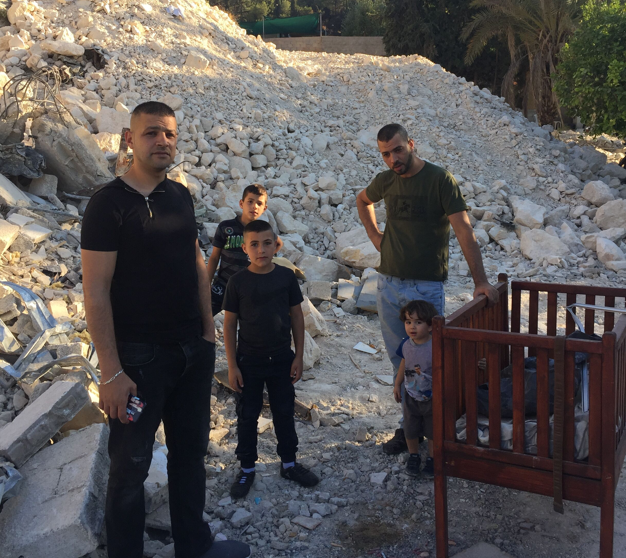
On a hill just south of the Old City lies a 54-hectare thriving pine forest, located within the Palestinian neighbourhood of Silwan - one of occupied East Jerusalem's most ghettoized areas, owing to Israeli government and settler initiatives.
The park, named the "Peace Forest," is for many visitors a tourist attraction, promoted as a "natural treasure" in the wider Israeli City of David archaeological site open to the public.
The forest was created and named shortly after Israel's occupation of East Jerusalem in 1967, by the Jewish National Fund, an organisation that financially supports illegal Jewish settlement projects targeting Palestinian neighbourhoods.
Since the 1970s, the area has been zoned by the Israeli government as "green," meaning construction there is prohibited.
In 1977, the government handed control of the City of David project to the El-Ad Jewish settlement group.
New MEE newsletter: Jerusalem Dispatch
Sign up to get the latest insights and analysis on Israel-Palestine, alongside Turkey Unpacked and other MEE newsletters
The area of Wadi Yasul in Silwan, housing over 500 residents, has been slated for demolition by Israeli authorities.
With nowhere to expand over the decades, the residents of Wadi Yasul have had to build without difficult-to-obtain Israeli permits, subjecting them to demolition orders and displacement.
'Every day you step out of your house is a risk'
The families have battled in the courts for more than 15 years to rezone the area as residential, yet the government has maintained that it should remain "green".
A number of structures in the area have already been demolished - on 17 April, Israeli forces destroyed a stable and a warehouse, as well as two homes on 30 April, displacing 11 people.
Qusai and Anas Burqan built and lived with their families in the two homes, which were demolished two weeks after El-Ad received approval from various governmental institutions to develop commercial enterprises in the park.
The projects, supported through funding and land allocation by the Israeli Jerusalem Municipality, the Israel Land Authority and the Tourism Ministry, include a visitor centre, campgrounds and a zipline.
"They have destroyed all my chances to live a modest life," father-of-three Qusai Burqan, who has since moved with his family to a 50 square metre apartment, tells Middle East Eye.
He says the demolition will cost his family 74,000 shekels ($21,200), which he is unable to pay. "I am frustrated and hopeless."
"My children ask me when are we going back home. They ask me why is Israel doing this to us? What can you say to them? I don't have the answers," his brother, Anas, tells MEE.
Um Abed Abu Eshah lives in the area with her husband and six children.
"We thought we would pay a fine and then get a permit for the house. We didn't expect that the whole neighbourhood would be struggling for decades," she tells MEE.
"We took this risk because there is no way of getting a permit [...] and for Palestinians, every day you step out of your house is a risk," she continued.
'Engineering a Jewish majority'
Since 1967, the Jerusalem Municipality has designated vast areas of annexed Palestinian territory as green spaces and national parks where building is not permitted.
Only 13 percent of land in occupied East Jerusalem is zoned for Palestinian development, most of which is already built on.
Meanwhile, some 83 percent is designated for state and settler use.
As a result, the poverty-stricken Palestinian population of the city suffers from severe overcrowding and is forced to build illegally.
"Planning policies in East Jerusalem do not meet people's housing and infrastructure need," the humanitarian coordinator at the United Nations Office for the Coordination of Humanitarian Affairs (OCHA), Jamie McGoldrick, told MEE.
"At least a third of Palestinian homes are unlicensed, and more than 100,000 people are potentially at risk of demolition and displacement."
As of July, a total of 126 structures had been demolished in 2019, displacing 203 Palestinians.
"Engineering a Jewish majority in Jerusalem by driving Palestinian East Jerusalemites out of the city has been Israeli policy since the 1967 occupation began," Amit Gilutz, spokesperson for the Israeli human rights group B’Tselem, told MEE.
"Israel has made it all but impossible for Palestinians to obtain building permits.
"Left with no other option, Palestinians build illegally, which then prompts Israel to issue demolition orders and in numerous cases demolish their homes," he said.
'Tool for achieving demographic goals'
Some 29 percent of the planned area in East Jerusalem has been designated "open/green areas," intertwined with Israeli Jewish-only settlements, many in the heart of Palestinian neighbourhoods.
The government-sponsored expansions and development of settlements aims to fulfil the goal of maintaining a Jewish majority in the city, as articulated in several Jerusalem Municipality city plans.
MEE contacted the Municipality of Jerusalem's city planning department for comment but received no response.
Sari Kronish, an architect for the organisation Bimkom, which supports planning rights for Palestinians, believes there is an unparalleled increase in the designation of Palestinian land in East Jerusalem as national parks.
"This is clearly a tool for achieving demographic goals. What has perhaps been more covert in the past is becoming more and more overt," she tells MEE.
'We feel humiliated'
In 2014, the UN secretary-general wrote in a report that "archaeological excavations and parks are also used as a way to control land for settlements, mainly through the funding, participation and endorsement by the Government of Israel of archaeological projects led by settler organisations".
"Observer organisations report that several archaeological projects in the Old City of Jerusalem are being used as a means to consolidate the presence of settlements and settlers in the area."
Adel Jabori, a resident of Wadi Yasul, says the ultimate aim is to uproot the Palestinians, their buildings, trees and families.
"We feel humiliated, and the situation is only getting worse," the 69-year-old told MEE.
Adel was one of many residents displaced from his home in the Old City in 1967.
With the increasing pressure on neighbourhoods like Wadi Yasul, it seems only a matter of time before history repeats itself.
This article is available in French on Middle East Eye French edition.
Middle East Eye delivers independent and unrivalled coverage and analysis of the Middle East, North Africa and beyond. To learn more about republishing this content and the associated fees, please fill out this form. More about MEE can be found here.


